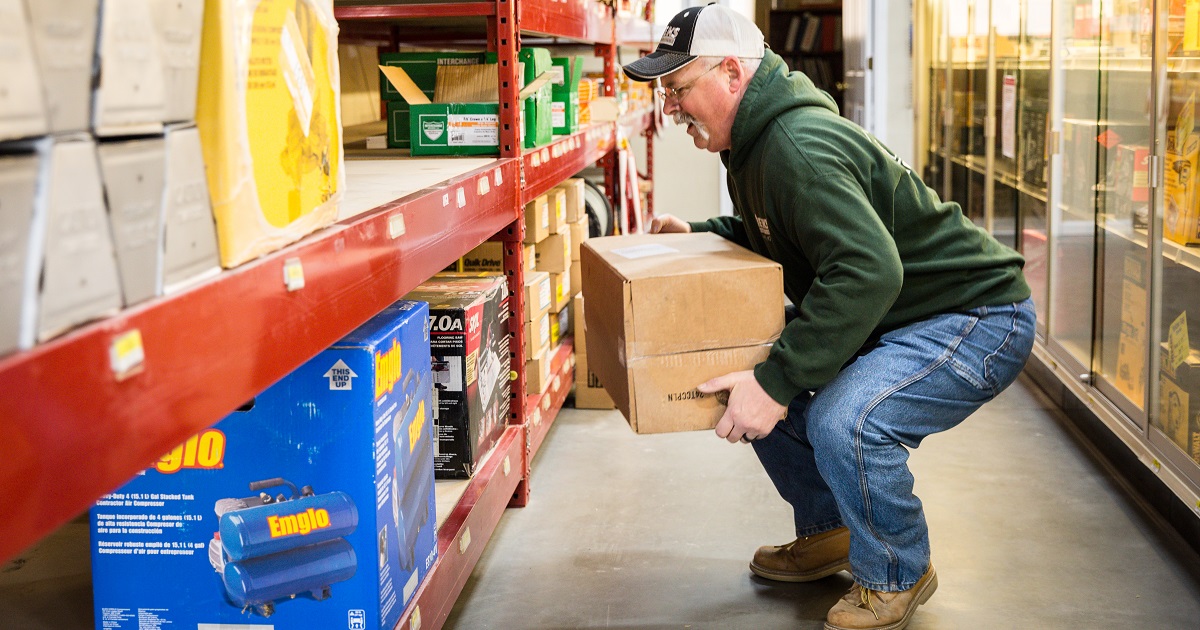For Media Inquiries
Contact Revee White, Director of Marketing and Communications at rwhite1@mem-ins.com or 573.499.4190.
October has been designated as National Ergonomics Month by the Human Factors and Ergonomics Society. It’s a month worthy of recognition. If there’s one thing we can get behind as a safety company, it’s ergonomics.
More than just pain, investing in ergonomics can also save your business money. Learn how MEM policyholder Culligan of Mid-Missouri changed some of their ergonomics practices to do so.
Inspired? Pledge to move better by checking out some of our top ergonomics pain points:
1. Avoid back strain.
Overexertion is the leading cause of workplace injury, making up 34% of lost-time injuries.
According to the National Safety Council, the causes of most of these injuries fall into a few categories:
- Directing excessive physical effort at an object (lifting, pulling, carrying, throwing)
- Repetitive motion (typing, using tools or instruments)
- Free bodily motion (bending, crawling, twisting, kneeling)
The types of movements that can lead to strains and sprains often seem harmless – but the frequency of these injuries shows that many employees are underestimating the risk or are simply unaware of safety protocols that can prevent them.
2. Lift safely.
Using unsafe or careless lifting techniques can put you at risk for a serious back injury.
Make sure your employees know the basic best practices for lifting:
- Stabilize your body by keeping your feet shoulder width apart.
- Squat and let your leg muscles do the heavy lifting. Avoid bending and relying on your back muscles.
- Avoid twisting while lifting.
- Get help and team-lift heavy loads.
- When possible, use tools or equipment for heavy lifts. Some examples: skid steer, loader or dolly.

3. Stretch often.
When your muscles aren’t prepared, it doesn’t take much to strain them. Stretching gives your body a chance to warm up and reduces your risk of muscle injury.
Many strains and sprains result from repetitive motion – doing the same job day after day, sometimes for years. While stretch breaks and proper form can reduce this risk, sometimes the most effective solution is to change or eliminate the motion entirely.
One Missouri Employers Mutual policyholder reduced this risk by starting a stretching program on a specific schedule.
4. Look at your processes and equipment.
In some situations, a process improvement can be all it takes to reduce exposure to repetitive motion and strains. Perhaps the job can be performed from a seated work station instead of requiring the employee to bend over. Alternatively, if the employee is repeatedly bending over to pick up materials, maybe the materials can be positioned on a nearby platform instead of the ground.
You should also consider equipment options that could alleviate your team’s most harmful repetitive motions. An up-front investment in new equipment pays for itself quickly when you consider that an employee with an overexertion injury misses 13 days of work on average. This lost productivity plus the impact that a work comp claim can have on your insurance premium makes doing everything you can to prevent injuries a no-brainer.

5. At a desk? Examine your setup (and your posture).
Employees in business and professional services might not be moving heavy objects all day, but they’re also at risk for strains and sprains. Sitting at a desk for seven or eight hours a day can be harmful to the body, especially if the work station is not set up ergonomically.
Teach employees about the 20/20/20 Rule: Every 20 minutes, look at an object 20 feet or more away for 20 seconds. Your eyes need the full 20 seconds to relax, keeping their tissues flexible and oxygenated. It’s a great opportunity to get up, stretch and get a drink of water. Your ergonomics training should also address good posture for long-term sitting.
6. Talk a walk, listen and learn.
Speaking of getting up and moving, we have great listening resources available while you take a break from your work station.
Check out our WorkSAFE Podcast where we talk with an expert about what overexertion injuries are and how they happen. Then, we will explain how employers can prevent them at work and at home. Finally, we’ll talk about rehabilitating strains and sprains.
Working from home? We have a WorkSAFE Podcast dedicated to optimizing your workstation so it is ergonomically correct.